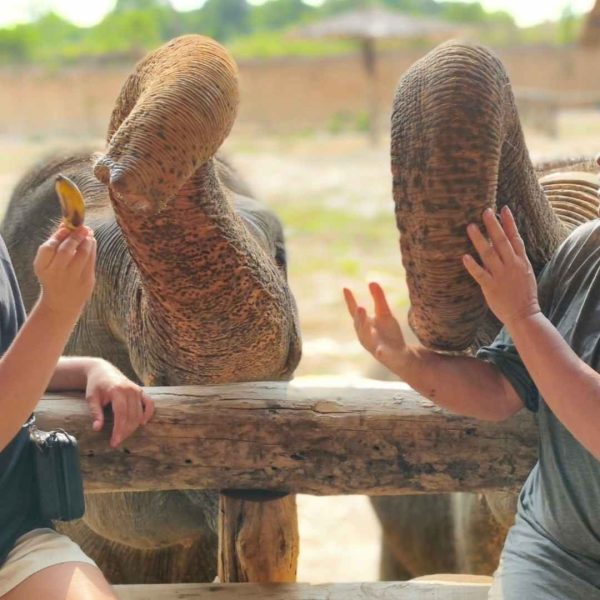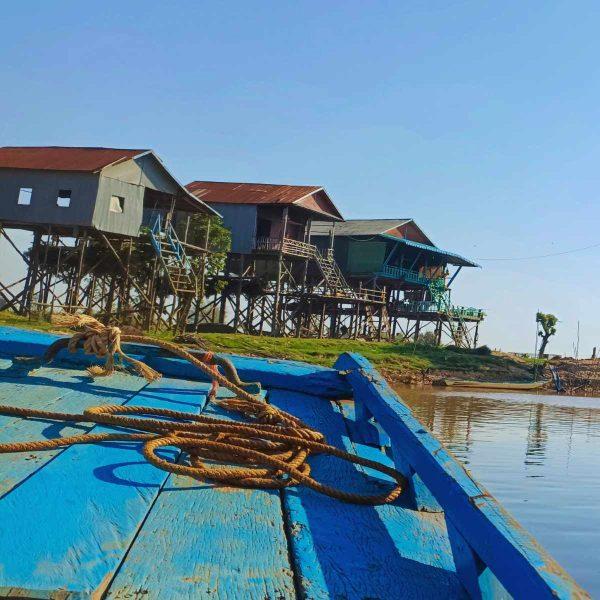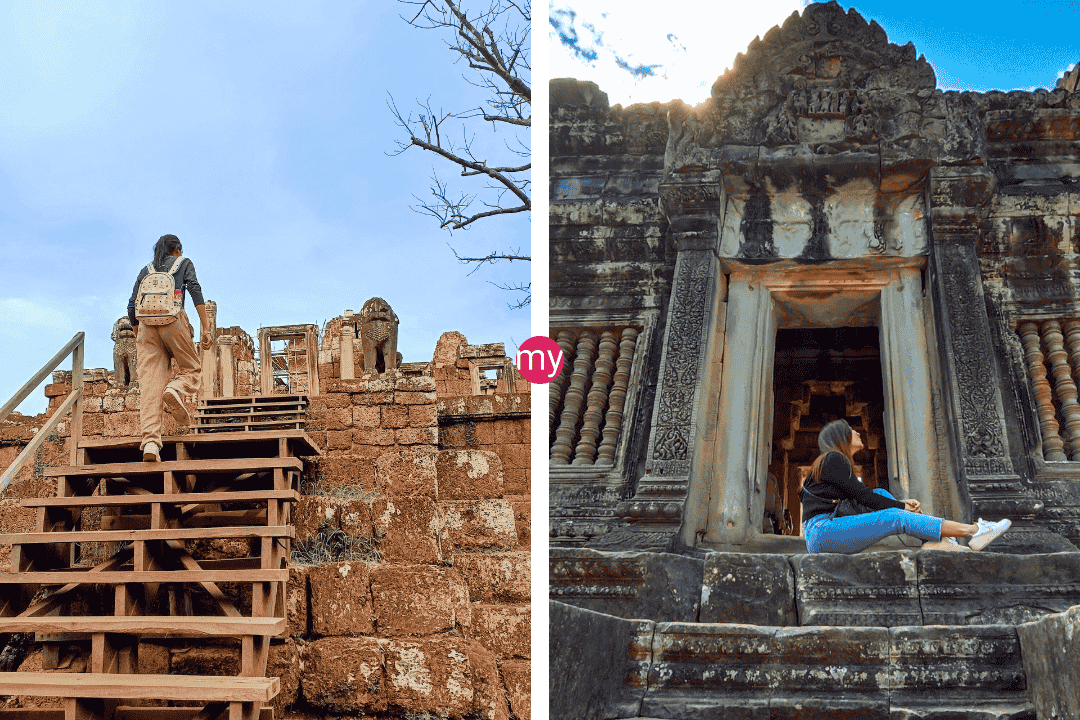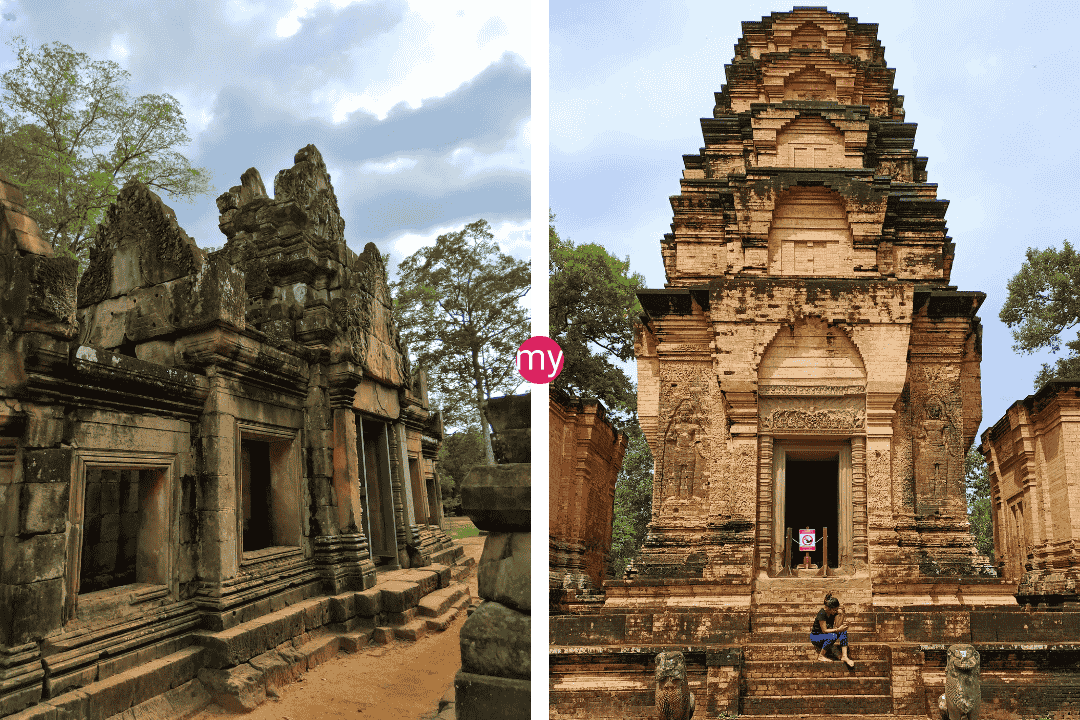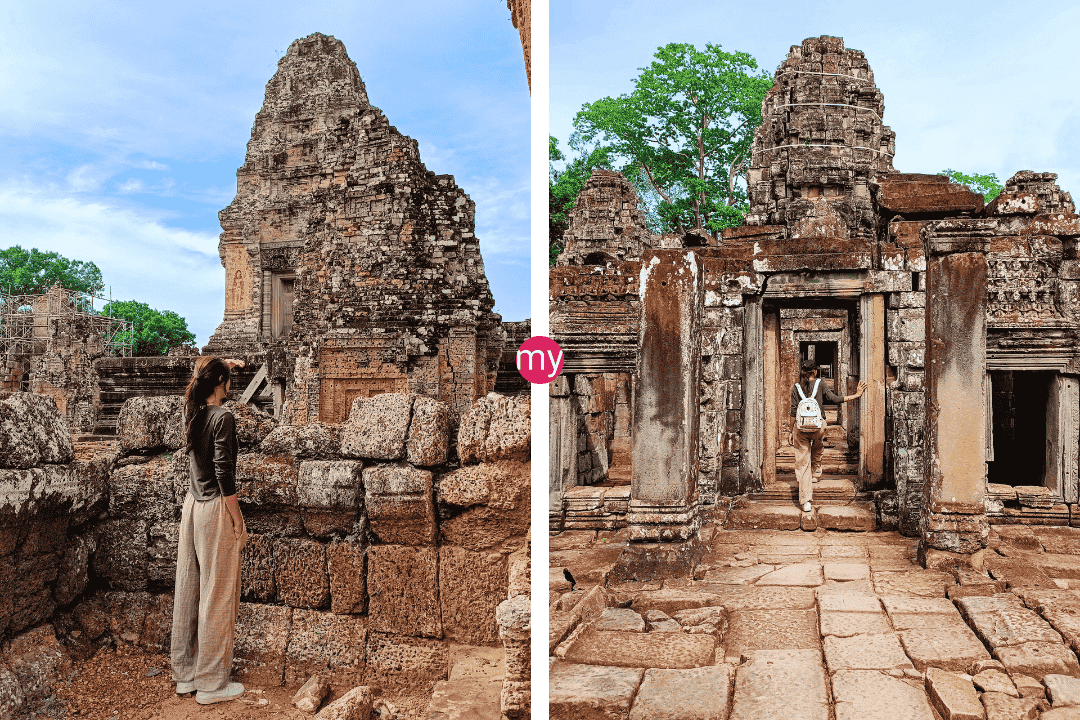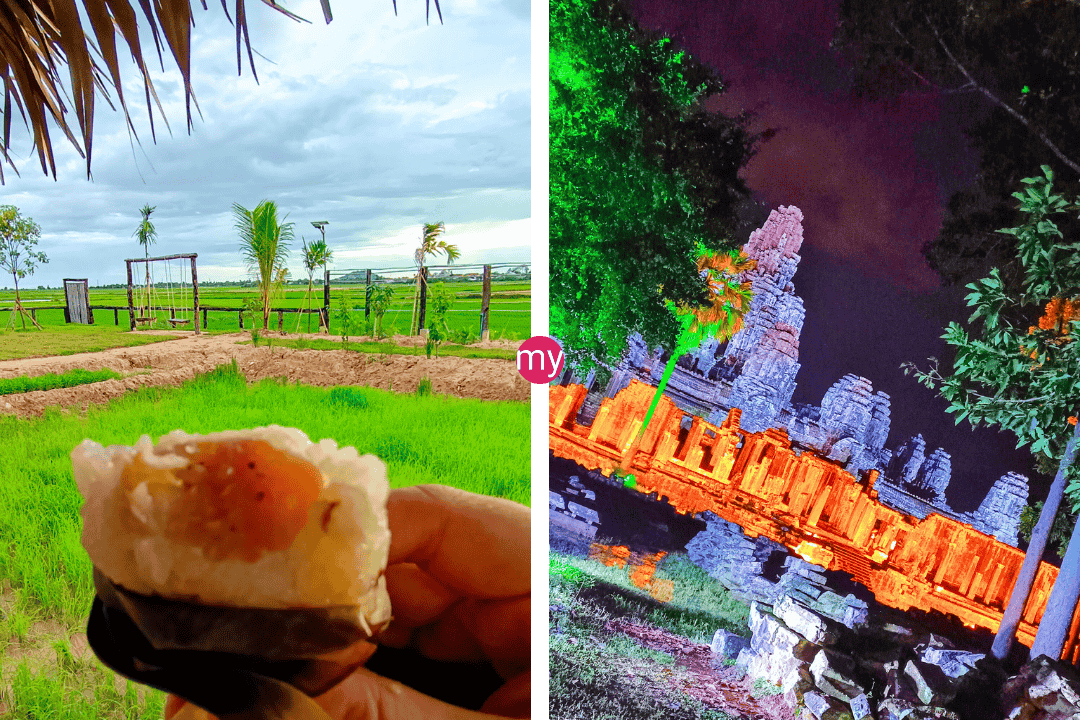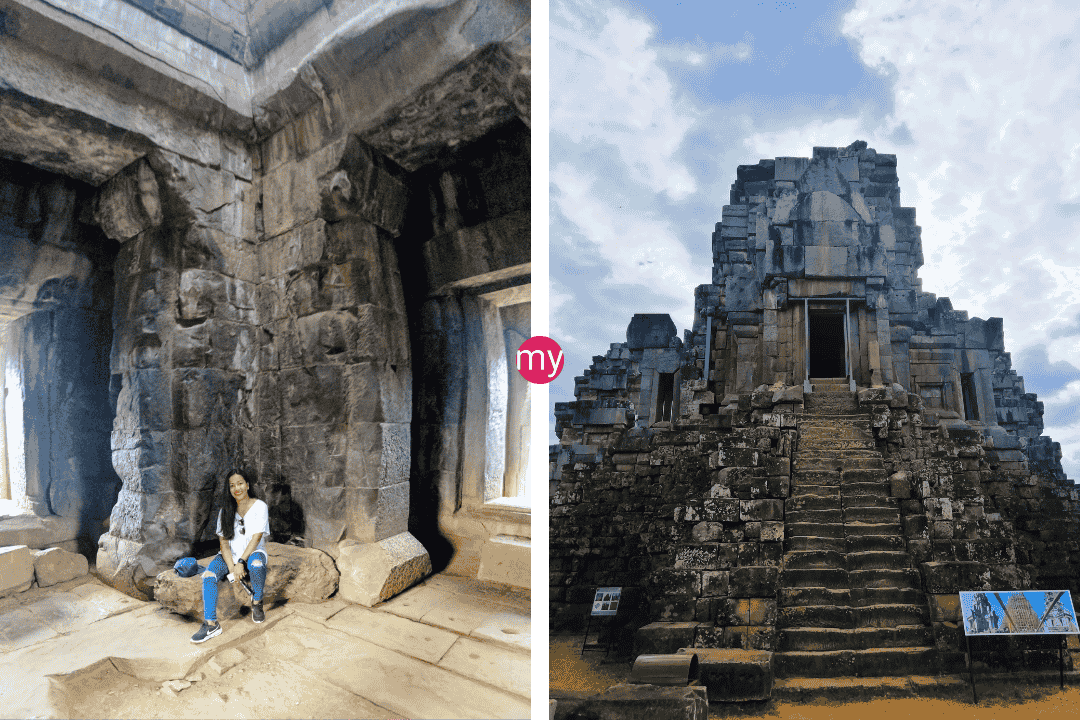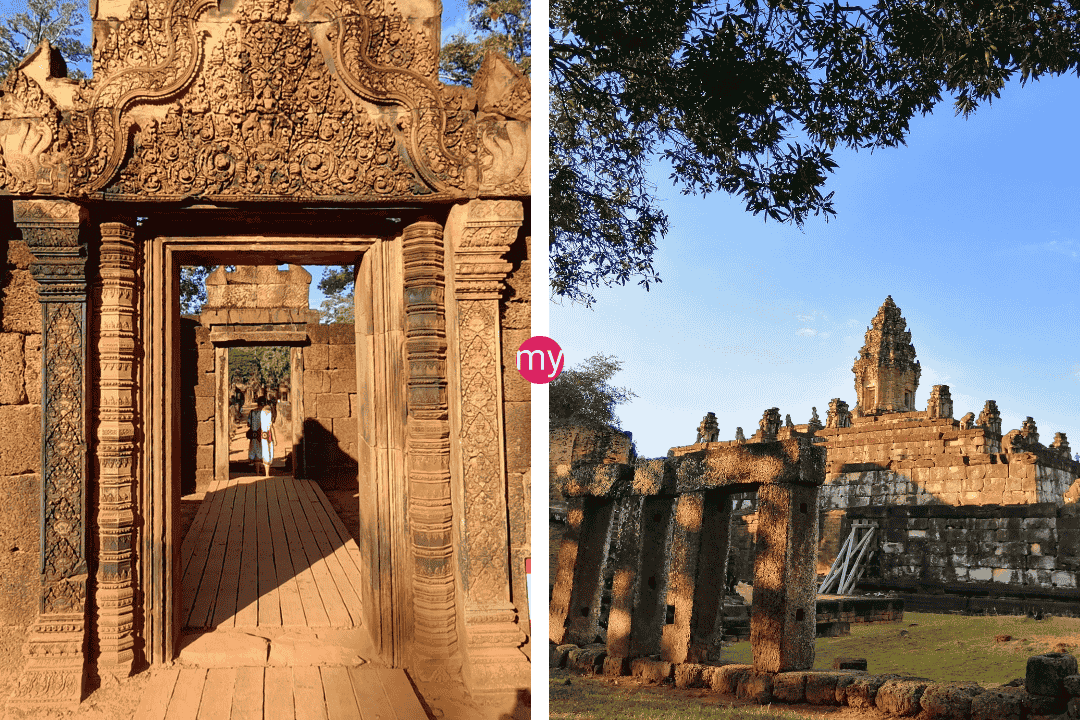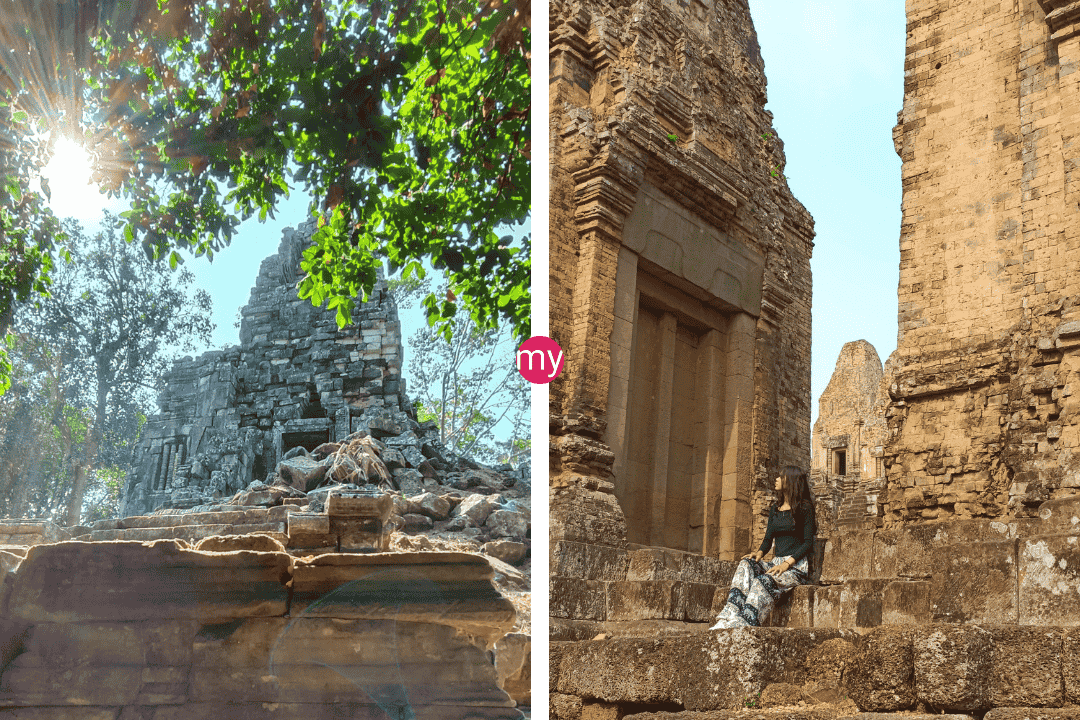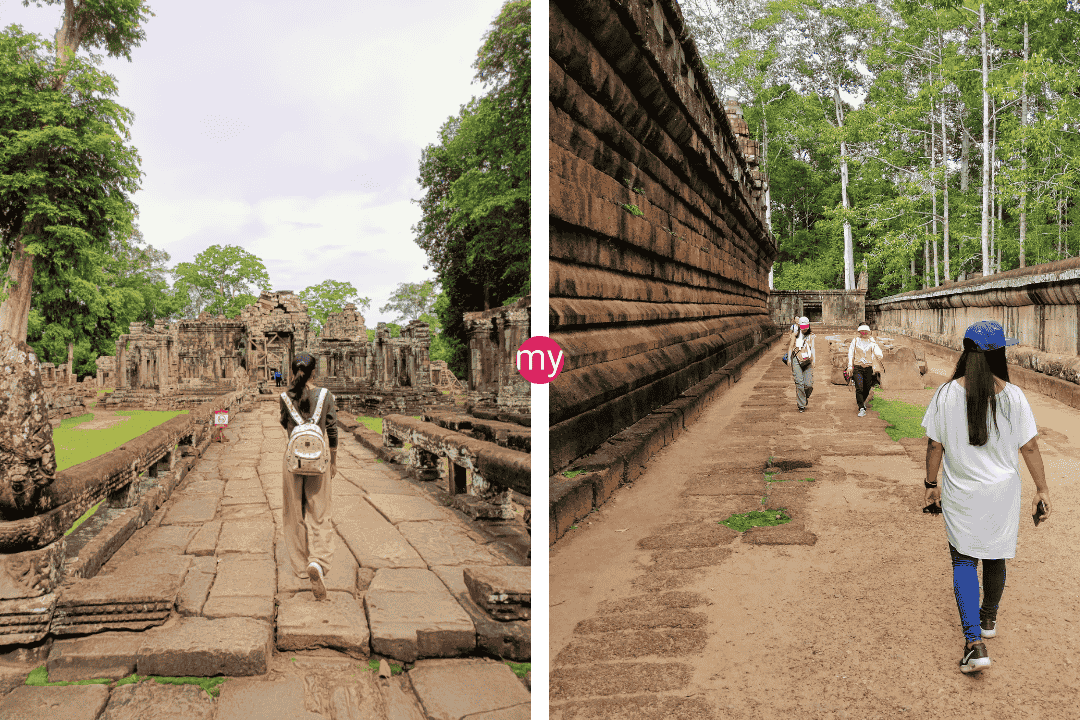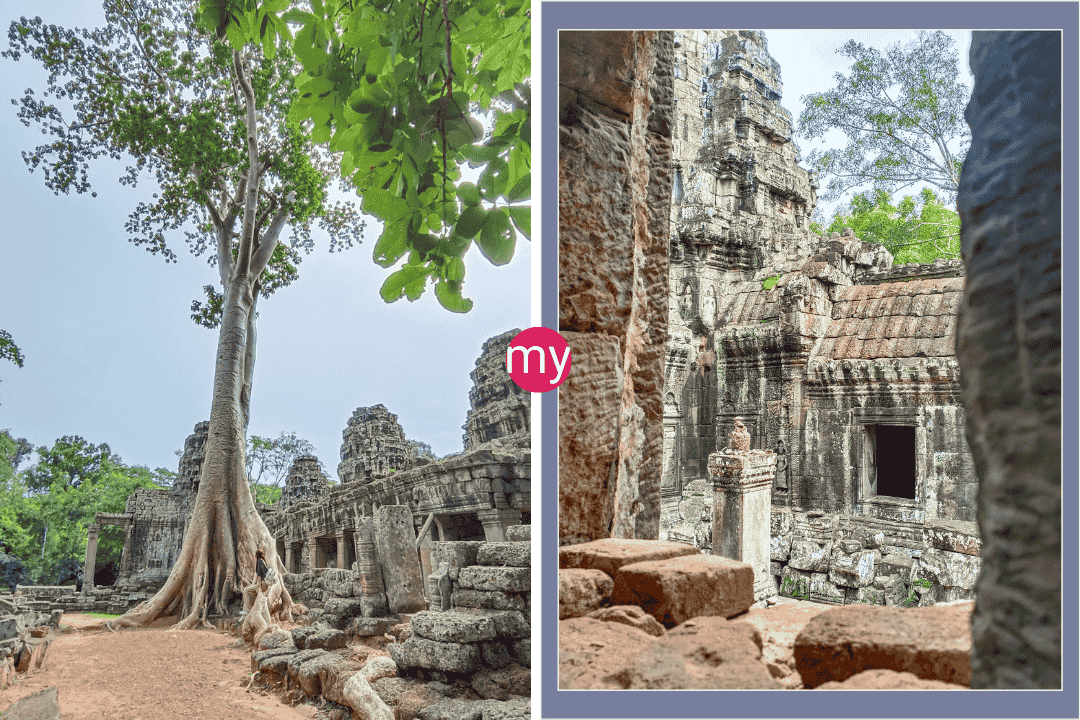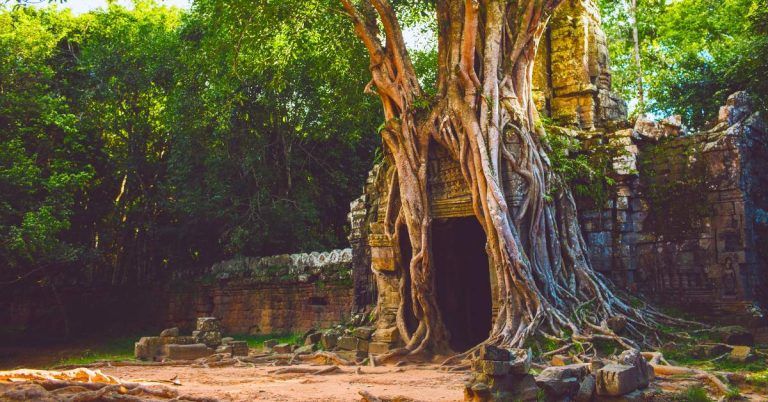
We Unveils Soaring Corporate Travel Demand For Bleisure Trips In South East Asia While Overall Business Expenditure Increases
Mixing Business with Leisure: The Rising Trend of ‘Bleisure’ Trips in South East Asia Amidst Growing Corporate Spending
Bleisure Boom: Corporate Travel Meets Leisure in South East Asia Amid Rising Spend
As South East Asia opens up its skies and boardrooms once again, businesses are witnessing a significant surge in travel demand. Corporate warriors are not only returning to the airways for meetings and conferences but also blending work trips with leisure excursions, creating a new trend known as ‘bleisure’ travel.
This emerging pattern poses both challenges and opportunities for companies managing travel budgets while ensuring employee satisfaction.
A fascinating insight from Trip.biz highlights that corporate travelers in South East Asia now emphasize the need for fast-track security lanes, showing their preference for efficient and hassle-free experiences.
Your business may be grappling with these evolving demands — how do you strike a balance between cost-efficiency and traveler comfort? This blog post is designed to guide you through understanding this shift, offering practical advice on leveraging it to benefit your company.
Ready to unlock the secrets of seamless bleisure travel management? Keep reading to explore strategies that merge productivity with pleasure effectively.
Key Takeaways
- Corporate travel in Southeast Asia is rapidly growing, with a surge in business trips that blend work and leisure, known as bleisure trips. This trend reflects professionals’ desire to maximize their work journeys by adding vacation time.
- Digital tools are revolutionizing the corporate travel industry, making bookings more efficient and providing flexible options for travelers. Hotels and airlines are enhancing services to accommodate the increasing demand for bleisure experiences.
- Business travel expenses across Southeast Asia are on the rise due to factors like higher rates post-pandemic recovery and companies valuing face-to-face interactions. The growth presents opportunities for new tailored services within the travel sector.
- Southeast Asia’s tourism industry benefits from increased domestic business travel and digital enhancements that align with modern corporate traveler expectations. This boosts local economies and encourages innovation in service offerings.
Business Travel Demand in Southeast Asia
Business travel in Southeast Asia is experiencing a significant rebound as the region emerges from pandemic restrictions, with companies embracing digital tools to enhance connectivity and promote domestic corporate journeys.
Rebounding post-pandemic
Southeast Asia’s corporate travel scene is bouncing back quicker than ever. The lifting of international borders has released a pent-up demand for face-to-face business meetings, resulting in a surge of travelers jetting across the region.
Companies are sending their employees out on the road again, eager to reestablish connections and tap into emerging markets—Cambodia included.
This resurgence is more than just numbers; it’s about enhanced experiences too. Travelers can now enjoy perks such as fast-track security lanes and flexible ticket policies that cater to unpredictable schedules.
Hotels across Southeast Asia are stepping up their game as well, prioritizing quality service to meet the high standards of today’s business voyagers. With spending projected to soar in the coming years, this rebound signals both recovery and opportunity for local economies heavily reliant on corporate tourism flows.
Digitization trends
Digitization trends are shaping the future of corporate travel, making it easier and more efficient for travelers to Cambodia. Now, with a few clicks on their smartphones or laptops, business travelers can book their flights and accommodations, check in online, breeze through airport security with fast-track lanes, and even adjust their plans on-the-go thanks to flexible change and cancellation policies as reported by Trip.biz.
This shift towards digital capabilities caters not only to the need for convenience but also reflects the increasing demand for contactless transactions in a post-pandemic world.
Hotels across Southeast Asia are upping their game too; they’re integrating technology to provide top-notch service that meets the expectations of tech-savvy corporate clients. From mobile room keys to personalized services via apps, hotels are enhancing the guest experience while enabling business travelers to seamlessly mix leisure into their trips—a blend known as ‘bleisure’.
This synergy between digital innovation and guest satisfaction is driving high occupancy rates and opening new revenue streams for the hospitality industry within this dynamic region.
Increased domestic travel
Business travelers in Southeast Asia are hitting the road more often for domestic trips. With international borders reopening, there’s been a surge in traveling within countries like Cambodia.
Hotels and airlines are adapting quickly to this uptick, offering deals and services tailored to those moving around their own nation for work purposes. Domestic travel is becoming an integral part of the corporate world, as professionals seek out new markets and local opportunities.
The trend shows no signs of slowing down with businesses investing more in travel budgets. Companies realize the value of face-to-face meetings and regional networking—and they’re willing to pay for it.
This increased spending on domestic business travel is fueling growth across various sectors, from hospitality to transportation, indicating a robust recovery post-pandemic.
-
Angkor Wat tours
Angkor Wat Half Day Sunset Tour | Angkor Wat Afternoon Tour [3 Temples, 2 Angkor Gates, 1 Sunset. 0 Stress]
From: $22Rated 0 out of 5 -
Angkor Wat tours
Late Morning Angkor Tour | Best Ta Prohm and Angkor Thom tour with late morning start [With Monk Blessing] and Angkor Wat before Sunset
From: $22Rated 0 out of 5
The Rise of Bleisure Trips
The phenomenon of bleisure trips, a fusion of business and leisure travel, is gaining momentum across South East Asia as professionals seek to maximize their corporate journeys by incorporating vacation time.
This emerging trend not only enriches employee experience but also presents unique opportunities for companies to enhance work-life balance and job satisfaction amidst intensifying business travels.
Definition and trend in travel industry
Bleisure trips blend business with leisure, an emerging trend where corporate travelers extend their work journeys to enjoy some vacation time. This shift is reshaping the travel industry as professionals seek to maximize their trips by experiencing local culture and attractions in destinations like Cambodia.
Data indicates a significant uptick in this behavior across South East Asia, marking a new pattern in corporate travel demand.
As international borders reopen, the lines between office and tourism blur even further. Business travelers are now more likely than ever to book a longer stay to explore the sights after their meetings wrap up, driving up hotel occupancy rates and spending on local experiences.
This change reflects a broader movement towards personalized and flexible travel arrangements that cater not just to business needs but personal enrichment as well.
Benefits for businesses and employees
Bleisure trips offer a dual advantage to companies and staff by fusing business with leisure, allowing for richer travel experiences without significant increases to budgets. Employees gain from this model as it improves work-life balance; they can explore destinations like Cambodia after meetings conclude.
At the same time, businesses benefit as well – happy workers are often more productive and committed. Data also suggests that such blended travel policies could lead to increased employee retention rates.
For businesses operating in South East Asia’s growing economy, embracing bleisure travel has become a strategic move. It not only boosts morale among employees but positions companies as modern employers who value their workforce’s well-being.
Employers are seeing direct benefits through enhanced team performance and indirect benefits via positive brand representation when employees share their travel experiences on social media platforms, thus amplifying corporate reputation in an increasingly connected world.
Overall Increase in Business Expenditure
As corporate travel rebounds robustly in Southeast Asia, a significant uptick in business expenditures accompanies this trend, with companies investing more in their employees’ travel experiences.
Factors such as escalated airfare and hotel rates post-pandemic recovery periods are driving costs higher while businesses simultaneously recognize the value of face-to-face meetings and the opportunities that arise from employee satisfaction gained through bleisure trip offerings.
This increase is not just a surge but an indication of the changing landscape of corporate priorities where experience and productivity go hand-in-hand, presenting both challenges and prospects for industry growth.
Factors driving growth
Several factors are fueling the rise in corporate travel expenses across Southeast Asia. The reopening of international borders has been a huge accelerator, sparking a swift rebound in business trips.
This resurgence is not just about sealing deals face-to-face; it’s also about the growth of bleisure travel, where professionals extend their stays for leisure. With more business travelers looking to mix work and play, there’s an increased demand for quality hotel services that cater to their versatile needs.
The projected 41% increase in Asia Pacific’s business travel spending this year showcases this upward trajectory. Companies are investing more into their travel budgets as they recognize the value of in-person meetings and networking opportunities abroad.
Moreover, flexible change and cancellation policies are becoming standard practice, reflecting corporate travelers’ need for adaptability amidst unpredictable schedules—a key insight from Trip.biz data.
These trends point toward a robust future for the travel industry in Southeast Asia, especially as high levels of flexibility continue to characterize how professionals choose to conduct their business voyages.
Opportunities for the travel industry
The surge in corporate travel demand presents a ripe market for new services and tailored experiences, especially as travelers seek to merge business with leisure. Hotels and airlines can capitalize on this bleisure trend by offering packages that cater to the unique needs of these travelers, such as flexible booking options and itineraries that mix work commitments with local tourism activities.
With businesses expanding their budgets, the travel industry has the chance to innovate solutions that align with corporate travel policies while providing memorable experiences.
Travel providers have an incentive to enhance guest experiences, recognizing quality service as a priority among business travelers in Southeast Asia. The expansion of fast-track security lanes and flexible cancellation policies is crucial in meeting the expectations of today’s corporate clients.
Additionally, accommodations that can double as conducive work environments are increasingly desirable, positioning the hospitality sector for growth within urban centers and popular tourist destinations alike.
This shift towards high standards in both amenities and services offers significant potential for increased revenue streams from a demographic with evolving demands.
The Impact on Southeast Asia’s Tourism Industry
The burgeoning demand for corporate travel accompanied by the surge in bleisure trips is energizing Southeast Asia’s tourism sector, spurring a fresh wave of domestic excursions and prompting industry-wide digital transformations that cater to the evolving needs of business travelers.
Increased demand for domestic travel
Companies in Southeast Asia are seeing a clear uptick in domestic business travel. With international borders just reopening, there’s been a quick pivot to exploring opportunities within the country’s own backyard.
This shift is mirrored across various sectors, keen on maximizing local potential and strengthening internal networks before venturing globally again.
This surge isn’t just about filling seats on flights or booking hotel rooms; it reflects deep changes in corporate strategies. Firms are recognizing the value of face-to-face interactions at the local level, even as digital communication tools become more prevalent.
Businesses are now more willing to invest in travel budgets that allow employees flexibility and comfort, aligning with rising trends like bleisure trips – mixing business with leisure for a richer travel experience.
Digitalization and innovation
Digitalization and innovation are transforming corporate travel in Southeast Asia. Bleisure travelers now expect seamless experiences, from booking flights to hotel check-ins, powered by the latest digital solutions.
Tech-savvy businesses are leveraging mobile apps and online platforms to facilitate these demands, ensuring a smooth transition for employees mixing business with leisure. These tools often include features like fast-track security lanes and flexible change policies, directly responding to traveler preferences outlined in Trip.biz survey data.
Innovation doesn’t stop at booking convenience; it extends into enhancing the entire travel experience. Quality service through digital channels is becoming critical for hotels looking to attract the rising number of business tourists blending work with vacation time.
With international borders reopening, there’s an urgent need for the tourism industry to adopt cutting-edge technologies that can handle increased visitor numbers efficiently while maintaining high service standards.
Smart technology adoption is vital in keeping pace with growing expectations and solidifying Southeast Asia as a prime destination for modern corporate travelers seeking flexibility and efficiency on their trips.
Embark on an enthralling 3-Day Siem Reap and Angkor Tour. This comprehensive itinerary takes you through the heart of Cambodia’s most breathtaking attractions, from the iconic Angkor Wat to the enchanting city of Siem Reap and the serene Phnom Bok hill. Here’s a glimpse of your journey:
Day 1: Angkor Wat Special Tour
- Begin with exploring Ta Phrom, Banteay Kdei, and Pre Rup temples.
- Experience the charm of Banteay Samre.
- Witness a magical sunset at Phnom Bok hill and temple.
Day 2: Siem Reap City Tour
- Delve into Siem Reap with stops at Angkor Botanical Garden, Wat Thmei Pagoda, and Wat Athvear Temple.
- Conclude with a sunset view from Phnom Krom village.
Day 3: Explore Angkor’s Small Loop
- Marvel at Angkor Wat, Angkor Thom, and the Bayon Temple.
- Discover the Victory Gate, Khmoch Gate (Gate of the Dead), and more.
- Visit the Thommanon and Chau Say Tevoda temples, Ta Keo, and Prasat Kravan temple.
What’s Included:
- Customizable itinerary to suit your interests.
- Comfortable transportation by car or minivan.
- Expert English-speaking guide for insightful explorations.
- Cold water bottles provided for your convenience.
- Pick-up and drop-off service from your hotel in Siem Reap.
Noteworthy Details:
- Angkor Pass: $62 for three days’ access to the Angkor Temple Complex.
- Dress Code: Respectful attire for temple visits; bring sunscreen and insect repellent for a comfortable experience.
- Booking and Group Size: The tour accommodates up to 8 people, ensuring a personalized experience. The price varies per group, not per person.
Ready for an unforgettable adventure? Find more details and book your journey on the My Siem Reap Tours website. Don’t miss this opportunity to explore Cambodia’s wonders in a truly immersive way!
The 3-Day Siem Reap and Angkor Tour is a well-rounded exploration of Cambodia’s historic sites. It’s great for those interested in cultural and historical insights, offering expert guidance and convenient transportation. However, it’s physically demanding and not suitable for young children or those with mobility issues. The small group size enhances the experience, but be aware of the extra cost for the Angkor Pass ($62). Overall, it’s a solid choice for an immersive cultural journey.
Statistics and trends
The business landscape in South East Asia is rapidly evolving, with a notable shift in corporate travel trends. Key markets such as Indonesia, Malaysia, Singapore, and Thailand are experiencing substantial growth, propelled by the increase in bleisure trips and greater business travel spending. Here are the latest statistics and trends that are shaping the corporate travel environment in this dynamic region.
| Country | Business Travel Growth | Key Trends |
|---|---|---|
| Indonesia | Significant rebound in post-pandemic travel | Surge in domestic business travel and preference for quality hotel services |
| Malaysia | Moderate increase in business travel expenses | Higher demand for flexible travel policies and fast-track security lanes |
| Singapore | Projected full recovery by 2024 | Rising popularity of bleisure travel influencing accommodation revenue |
| Thailand | 41% projected growth in business travel spending | Enhanced traveler autonomy with 69% reporting travel flexibility |
As reflected by the data, Southeast Asia is rapidly embracing the integration of business and leisure travel, with an emphasis on traveler satisfaction and digital innovation. These trends are not only fostering a more enjoyable travel experience for corporate travelers to Cambodia but are also ushering in a new era of opportunities within the travel and hospitality sectors.
Dive into the wonders of Cambodia with the 3-Day Angkor & Siem Reap Tour. Experience the majestic Angkor Wat at sunrise, explore the mystical Angkor Thom, and wander through the unique floating villages. Enjoy personalized guidance, luxury transport, and insights from local experts. Perfect for those with limited time, this tour blends ancient marvels with the charm of Siem Reap’s rural life. Ready to embark on this unforgettable journey? Check out all the details and book your adventure here. Don’t miss out on this exclusive experience!
Future Predictions for Southeast Asian Travel Market
As corporate travel demand in Southeast Asia accelerates, we predict a dynamic market expansion bolstered by technological innovations and evolving traveler preferences. Emerging trends suggest that businesses will increasingly accommodate flexible itineraries, integrating leisure elements into traditional business trips to enhance employee satisfaction and retention.
Challenges loom on the horizon as well, with industry-wide sustainability concerns and potential geopolitical shifts requiring careful navigation. However, opportunities abound for market players willing to adapt to the changing landscape through strategic investment in personalized experiences and advanced digital solutions catered to modern corporate travelers’ needs.
Continued growth and innovation
The forecast for the Southeast Asian travel market looks bright, with industry experts predicting not just a rebound but sustained expansion. New technological advancements are streamlining corporate travel, making it easier and more appealing for companies to send employees on business trips.
This growth is spurred by innovations such as fast-track security lanes and flexible cancellation policies that cater to the dynamic needs of today’s business travelers.
Fueled by these enhancements, the region’s tourism sector is seeing a significant upswing in domestic business travel and bleisure trips. Hotels are scrambling to upgrade their services to attract this lucrative clientele, with many focusing on providing quality experiences that seamlessly blend work and leisure.
This shift is creating abundant opportunities within the Southeast Asian travel landscape, prompting an increase in both corporate demand and overall business expenditure in countries like Cambodia.
Challenges and opportunities
As the demand for bleisure trips in Southeast Asia skyrockets, corporate travelers face both hurdles and prospects. Rising airfare and hotel rates present a challenge, but with borders reopening, there’s a fresh wave of international business travel recovery.
The flexibility offered in travel policies is crucial, as 69% of Asian business travelers now have some choice in how they journey. This shift towards traveler autonomy demands that services like Trip.biz offer fast-track security lanes and flexible change & cancellation options to meet the evolving needs.
Hotels are seizing the opportunity to cater to this new kind of traveler by blending work amenities with leisure experiences. Corporate travel budgets are expanding too; spending is projected to grow massively within a few short years.
This burgeoning trend spells out higher revenue for accommodations savvy enough to adapt their offerings. With quality service topping priority lists for these travelers according to Trip.biz data, businesses that pivot quickly stand to gain substantially from this increase in corporate demand and travel trends.
Conclusion
Travel trends in Southeast Asia are taking off, with bleisure trips becoming a common way for employees to enhance their business journeys. Companies recognize the benefits of combining work and leisure travel, which boosts both job satisfaction and productivity.
With each corporate trip, there’s more money flowing into travel budgets, suggesting a robust future for the industry. This dynamic shift is transforming Southeast Asia’s tourism landscape, opening doors to new opportunities and experiences for travelers.
The surge in corporate demand is not just a passing trend; it’s reshaping the region’s approach to business and pleasure travel alike.
-
Full-Day Tours
Koh Ker and Beng Mealea guided tour [breathtaking natural scenery]
From: $19Rated 4.67 out of 5 -
Full-Day Tours
Siem Reap Elephant Tour | Private full day tour with Secret Temples and Cambodia Elephant Sanctuary
From: $114Rated 0 out of 5 -
Half Day Tours
Kampong Phluk Tour – A Morning Tour Experience at Kampong Phluk Floating Village [All Included with Mangroves Sightseeing by Canoe]
From: $15Rated 0 out of 5
FAQs
1. What is a bleisure trip?
A bleisure trip combines business travel with leisure activities, allowing you to enjoy some fun time along with work.
2. Why is corporate travel demand increasing in South East Asia?
Corporate travel demand in South East Asia is increasing due to the region’s growing businesses and attractive leisure destinations.
3. Can I add vacation days to my business trip in South East Asia?
Yes, you can typically add vacation days to your business trip for a bleisure experience, but check with your company’s travel policy first.
4. Will the company pay for the leisure part of my bleisure trip?
In most cases, companies do not cover expenses for personal leisure activities during a bleisure trip.
5. How does an increase in business expenditure affect travelers?
An increase in business expenditure may lead to more opportunities and better facilities for travelers on their trips.
Featured
Recent Articles
Explore more on My Siem Reap Tours
Koh Ker and Beng Mealea guided tour | Banteay Srei temple tour semi-private guided tour | Angkor Wat Sunrise shared tour | Koh Ker and Beng Mealea guided tour | Morning Siem Reap floating village tour | Afternoon Siem Reap floating village tour | Private Angkor Wat special tour | Kulen Waterfall small group guided Tour | Private Angkor Wat mix temples photo tour
![Angkor Wat Half Day Sunset Tour Angkor Wat Afternoon Tour [3 Temples, 2 Angkor Gates, 1 Sunset. 0 Stress]](https://mysiemreaptours.com/wp-content/uploads/2025/05/Angkor-Wat-Half-Day-Sunset-Tour-Angkor-Wat-Afternoon-Tour-3-Temples-2-Angkor-Gates-1-Sunset.-0-Stress-600x600.jpg)
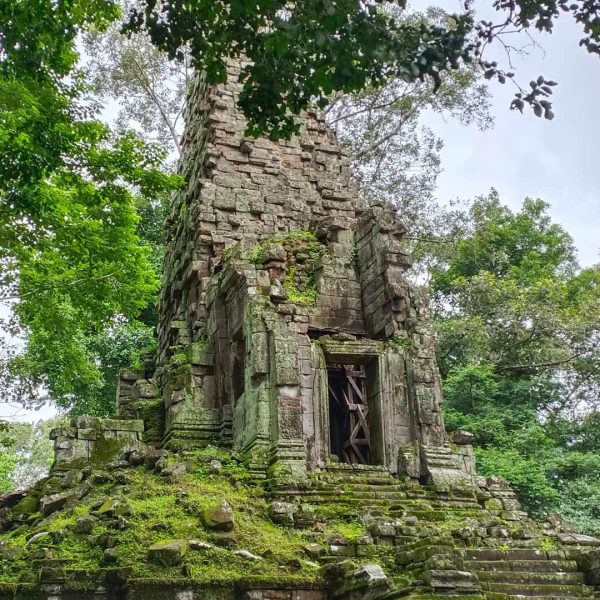
![Late Morning Angkor Tour Best Ta Prohm and Angkor Thom tour with late morning start [Lunch at Khmer home and Monk Blessing] and Angkor Wat before Sunset](https://mysiemreaptours.com/wp-content/uploads/2025/04/Late-Morning-Angkor-Tour-Best-Ta-Prohm-and-Angkor-Thom-tour-with-late-morning-start-Lunch-at-Khmer-home-and-Monk-Blessing-and-Angkor-Wat-before-Sunset-600x600.jpg)
![Tree roots growing on Prasat Pram Temple, Koh Ker. Koh Ker and Beng Mealea guided tour [breathtaking natural scenery]](https://mysiemreaptours.com/wp-content/uploads/2022/09/Tree-roots-growing-on-Prasat-Pram-Temple-Koh-Ker-600x600.jpg)
